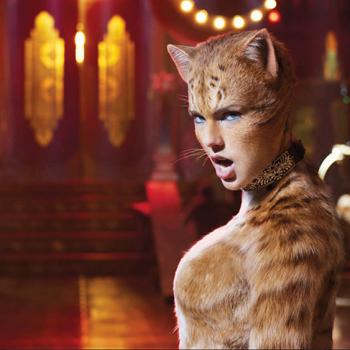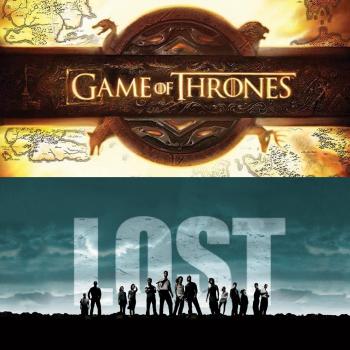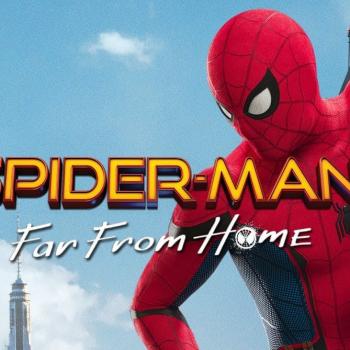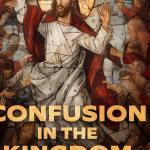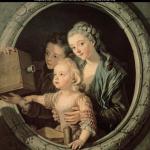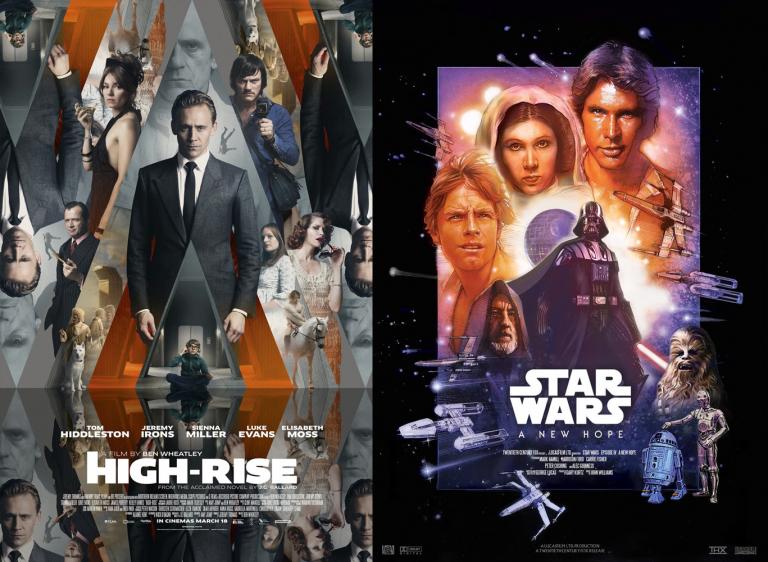
Recently, upon the advice of a friend, I watched the sci-fi dystopian film High Rise, starring Tom Hiddleston, Jeremy Irons, Luke Evans, Sienna Miller and Elisabeth Moss. I’m a sucker for a good sci-fi film, particularly one that ponders the exigencies of life or, even better, is downright allegorical – but about halfway through the film, I found myself sighing and throwing my iPad across the bed, the way I often do with those same sci-fi films.
But why? High Rise is gorgeously, even poetically filmed. The concept, which owes a debt of gratitude to films like Metropolis, which itself should be thanking Jonathan Swift’s Gulliver’s Travels, which in turn is an answer to Thomas More’s Utopia, which itself responds to Plato’s Republic – all of which consider the means by which societal classes exploit and eat each other – ought to have worked as a stand-alone film.
However, as I was watching the dream-like images unfold before me, all I could think was:
Sci-Fi Is Better Serialized
Lemme ‘splain.
There are a few ways to write speculative fiction (or SFF), which is the supergenre term for fantasy, science fiction, alternate reality, magic realism, etc. etc. etc.
However, it’s generally agreed upon that each subgenre will require you to suspend one area of disbelief. For example, fairies exist in A Midsummer Night’s Dream – and within the world of faerie: gods are invisible, love potions are real, seasons change with temper tantrums, and if you are an ass, you might turn into one.
Star Wars begins a long, long time ago in a galaxy far, far away, which opens the doors to FTL travel, a host of space aliens, and the major suspension of disbelief in the Force. (Which is one of the many reasons we all rebelled at midichlorians: we’d already bought into the Force. Don’t make us suspend disbelief for the thing we’re already suspending disbelief for.)
The prevailing wisdom regarding the willing suspension of disbelief is that audiences should only be required to do the heavy lifting for one element – or rather one new element of disbelief. Hence, Star Wars could add in the Force to the usual trappings of spaceships and aliens, because the idea of spaceships and aliens had already been accepted as just part and parcel of sci-fi.
Moreover, the Force, as it was described, still pulled upon latent gnostic beliefs of good and evil being equally weighed, of ying-and-yang, further codified by vaguely Franciscan-vaguely Buddhist “priestly” clothes for Obi-Wan and Darth Vader. Which is to say:
The more your worldbuilding resonates with allegories and archetypes from the real world, the quicker your audience will suspend their disbelief.
Conversely, then, the more you have to explain the alterations you’re making to the world, or the more you need to explain your allegory, the more heavy lifting you have to do to bring your audience along with you.
Which means, you need more time.
A World of Pure Imagination
Rewatch the most successful SFF movies, and you’ll notice that the ones that endure actually spend a considerable amount of time on exposition. Why? Because part of the appeal of SFF is that the environment, the rules of the world, are every bit as interesting and important as Aristotelian plot or characters.
Rewatch the first half of A New Hope, and you’ll notice just how slowly the plot progresses, while we’re given long shots of double suns, assisted by John William’s grounding score. We need Obi-Wan to tell us exactly what Mos Eisley is, because we’re travellers to this world, too. And it helps to have Luke as a “newcomer” POV character to ease us into that world.
Or remember how much of the first Harry Potter book and movie were spent ogling Diagon Alley and having Harry squeak out “What?” “What?” just like we, the excited audience are also squeaking out as we sort out why phoenix feathers or unicorn hairs might have different properties in wands. We want to know the difference between Ravenclaws and Slytherins (ahem, yours truly’s two houses). We’re reveling not just in the overarching plot to destroy Voldemort once and for all, but in all the details of the world that exists parallel to our own.
Orson Scott Card calls this the “M.I.C.E. Quotient:” a means whereby the author is exploring one piece of the world – the Milieu, Idea, Character, or Event. (Listen to a great podcast about that here.) In SFF, the Milieu is of first importance. What is this world? Why should we care? How is it like our world? How is it unlike?
The second most important piece of SFF, then, I’d argue is still not events or characters, but Idea. (The element that Aristotle puts third in his hierarchy, after plot and characters.) Once again, the more simplistic the Idea, the easier the audience will receive it. Good and bad. Black and white. These are easy ideas, and prevalent in both the early Star Wars and Harry Potter installments.
However, some of my favorite and most frustrating SFF films – such as High Rise, Gattaca, Dark City, Equilibrium, Looper, even Her – want to talk about something deeper, richer, examining the fragile nature of society and the human psyche. Yet, each of these films, for me, falls short.
Why?
Largely because it seems, to me, that the studio wanted an event or plot-driven story, while the story itself needed the time and space to explore the nooks and crannies of the milieu before anything significant even happened.
To prove my point outside of the realm of SFF, Downton Abbey absolutely began life as a Milieu story. Who wasn’t enraptured by the burning questions of whether Lord Grantham’s paper was properly ironed in the morning! Who wasn’t scandalized by the fact that a footman spoke out of turn, or the spoons were placed half an inch to the right!
When Downton Abbey went downhill, I’d argue, is when it began focusing on plot over milieu. The plot point of Lady Mary sleeping with the Turkish diplomat wasn’t exciting because of yet another pre-marital tumble shown even staidly on PBS, but rather it was the milieu – that pre-war world with its rules regarding race and sex and social status and scandal – which caused the excitement.
And that excitement didn’t even happen until well into the third hour.
Which means…
Go Netflix, Young Man!
With the advent of streaming serializations, such as Stranger Things, The Man in the High Castle, The Handmaid’s Tale and others, we’ve been given a vision of how serialized SFF storytelling can work. Similarly, with the sprawling and interconnected Marvel Cinematic Universe, the new Star Wars films, or even the small-screen Arrowverse, we’ve been given a template of how a SFF world can be introduced and then build upon itself: allowing the milieu to lead the way to introduce characters, plot and ideas.
Gilead wouldn’t be half so compelling if it were shoved into a two hour dystopia. Nor could the questions of how we destroy ourselves – the way flashbacks reveal that Serena Grace was the architect of all women’s destruction – be as fully explored if we didn’t have whole hours devoted to just one ideological question.
The reason why Black Panther or Infinity War could take on “darker” (read: more complex) themes, was because the majority of the heavy lifting, the worldbuilding, had already been accomplished in earlier films. There was space, now, for deeper ideas to be explored within the larger MCU.
Even Harry Potter, once it reached books six and seven, had more room to explore the nuances of good and evil – thoughts that the new Fantastic Beasts series is capitalizing on. The early books simply painted Dumbledore as “good.” The sixth and seventh book (even parts of the overstuffed fifth) began to question that reductionist look. And so, because we’ve already been immersed in Rowling’s world collectively, and can rattle off just what a Patronus is, we can now join her as she plucks apart the beloved wizard to the complex human beneath.
Of course, not every exploration is universally received: just look at the outcry over the new, complicated examination of good and evil in the latest Star Wars movies. However, if there’s outrage at a change in storytelling, it’s typically because the change is touching on the fundamental disbelief we’ve already agreed to suspend.
Because the Force was grounded in Manicheanism – that ancient, and ultimately juvenile view of the world as equally good and evil – because the Force was the franchise, to blur the lines between black and white as the new films are doing is tantamount to in-world heresy. (As opposed to Harry Potter, which was threaded from the beginning with a sense that our POV characters did not know everything in the world, leaving room for them to learn that adults are fallen, too.)
Given, then, that serialization gives room for worldbuilding, for the milieu, what else contributes to the difficulty of filming a stand-alone, complex SFF film?
For that, we’ll need our Greeks once again.
Tabula Rasa Characters
Aristotle in his seminal Poetics, said that there are six elements of every story: plot, character, ideas, dialogue, music, and spectacle. Six elements which he ordered in that hierarchy, from most important to least, in order to create a satisfying story. By and large, his hierarchy holds up under scrutiny. Many’s the heist or horror movie with cardboard characters but terrific plotting. Many’s the fallen musical spectacular which relied entirely upon spectacle without any substance and perished for it.
But in the case of SFF, where milieu is prime, a tabula rasa – or blank slate – character is frequently employed for our point-of-view guide. Consider: Harry, as a character, doesn’t have much of a character until he suddenly becomes angsty in book four. Luke Skywalker embodies the wide-eyed male ingenue, the naïf, until he sorts out exactly who his daddy is. In the Hunger Games, Katniss Everdeen is far less colorful a character than Effie Trinket or even Haymitch Abernathy. Even Elisabeth Moss as Offred in Handmaid’s Tale is fairly Everywoman with intense stares at the screen, but not much of a dazzling personality – so that we can put ourselves in her place, of course. Even Bilbo and Frodo in their respective adventures are less personable than Gandalf on his dullest day.
While there may be some structural argument for the tabula rasa POV character, I’d argue that it’s far from necessary to worldbuilding. In fact, in the case of the stand-alone movies I listed above, such as High Rise, the blank slate character actually impedes our ability to enter the milieu when we’ve only got two hours. Since we’re robbed of the ability to simply wander around the world using a stand-in audience avatar, we then need a character guide with more of a personality to keep us grounded in the world.
And it can be done.
The MCU was introduced by the fast-talking Tony Stark. A character full of character if ever there were one! Now, he was aided by the fact that the audience understands what a superhero movie looks like. Therefore the “willing suspension of disbelief” for the MCU was actually the introduction of vibrant, deeply human characters into a world of gods and men. That’s why audiences clung to Loki – who was more man than frost giant; why we loved Peter Quill; why even Ant Man, for Heaven’s sake, works. Why the Avengers going for shawarma after the battle of New York was so exactly the whole point of the MCU.
C. S. Lewis also managed this with Lucy and Edmund in The Lion, The Witch and the Wardrobe. We all know who those two characters are. In fact, it’s their older siblings who are more blank slate ciphers. But Lucy as the believer, Edmund as the skeptic: these are archetypes, allegories, and specific characters who didn’t detract from the milieu but exploded the very central idea and purpose of Narnia itself.
However, to return for example to High Rise, the role of Dr. Laing although his very presence is meant to show that inactivity can be as destructive as brutal force – because of the truncated nature of cinematic running time, because neither the milieu nor the idea were fully explicated for the audience, because his own allegorical positioning in the film was less clear than it is explained in the book, we’re left instead with a blank slate POV character who provides us with a blank slate POV of the world itself. There’s a reason why most film critics latched on to Luke Evan’s flashy character of Wilder in High Rise: his brute force overtly matched the allegory of the brutal culture clash among the citizens of the High Rise.
So too for many of the other stand-alone SFF films. The allegory and the action may sync up, the but storytelling does not. What should be made explicit is obscured; what might have remained implicit is never seen at all. And thus great films in potentia flicker away not with a cinematic bang but an artisanal whimper.
Happily Ever After?
I would love to be proven wrong about stand-alone, effectively short story SFF movies. And yet, if I’m being honest, I’d much prefer production companies to recognize a SFF story when they’ve got it, and make sure that each SFF story receives the set-up and worldbuilding time that it requires.
Later installments – book three of Hunger Games, book seven of Harry Potter, the whole damn Hobbit franchise – don’t need to be drawn out, but earlier installments exploring the milieu do.
I’d also encourage, just in general, an exploration of colorful lead characters – period. (But perhaps the tricksiness of writing lead characters can be a post for another day.)
In the meantime, if you’re hankering for some SFF, check out any of the sprawling epics currently available. Or perhaps, screenwriters among you, consider how you’d rewrite any of the stand-alone films to truly explore the world as it might be.
 Photo courtesy of Studio Canal and Disney.
Photo courtesy of Studio Canal and Disney.
You wanted it and you got it! Two Pop Feminist articles coming at you per week. Want even more? Become a Patron on Patreon for as little as $1/month!







